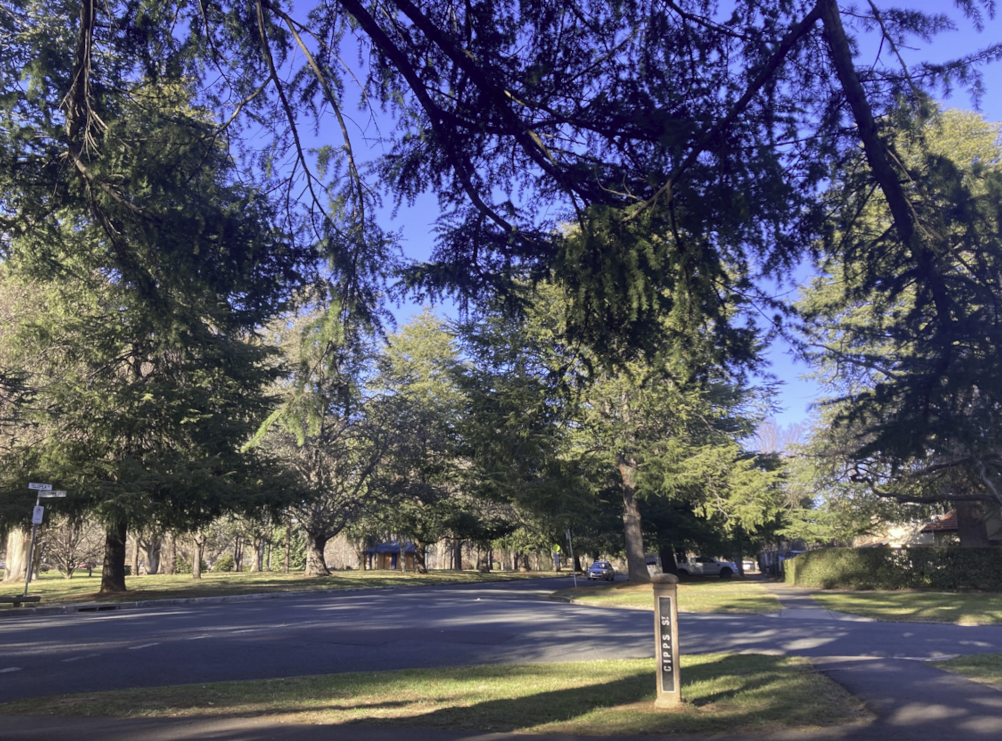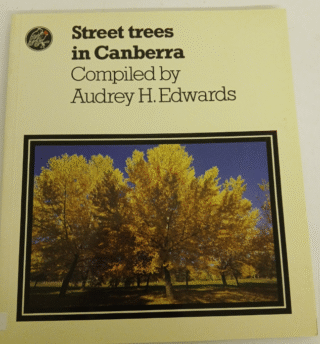Well I am a bit of a tree nerd and my latest fascination is with gymnosperms, all kinds, but trees especially. I see them as an interesting kind of ancient artefact of the Mesozoic, and the times before there were really any leafy or flowery trees. They have some funny characteristics, like their odd cones and spines, their ability to germinate easily from cuttings, and their great longevity and size – all the oldest, tallest and largest trees are gymnosperms. A lot of what I’ve learned has come from the very good gymnosperm database, but to see them in the flesh I am lucky enough to live near a town where pines and cedars were planted prolifically as street trees during the early 20th century – Canberra.
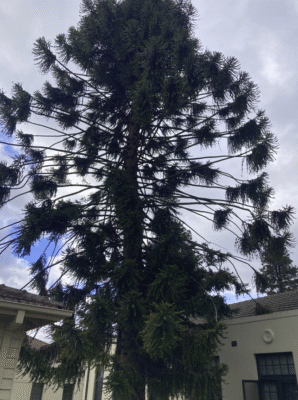
Canberra has a cold frosty winter and a dry hot summer and it’s a climate that seems suited to many different varieties of gymnosperm. It is also the capital city and the home of the CSIRO, and in the early days it also became the home of Australia’s forestry schooling. I don’t really know the full history, but the old buildings are now sadly a bit empty and the teaching of forestry has been taken over by the ANU, although they also stopped their undergraduate forestry degree a few years ago. CSIRO forestry is still going from its base in Yarralumla, and the campus is the home of several mature specimens of interesting gymnosperms including a big Bunya pine (I think) tucked in behind the old school, some giant sequoias, stone pines, and Douglas fir. I once spoke to some forestry folks here when i was doing a project on eucalypts back in high school and they were very helpful, i nearly went into forestry but other life things happened..
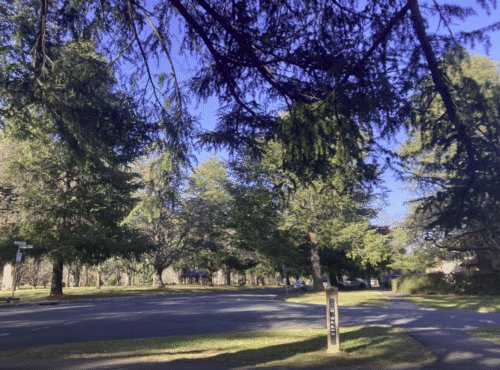
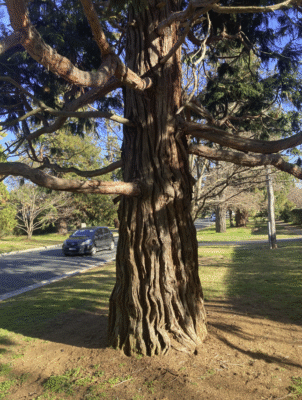
My favourite Canberra street for the trees on it is probably Gipps street in Barton, with its mature Calocedrus decurrens (incense cedar) with beautiful deeply grooved reddish bark. I have a book ‘Street trees in Canberra‘ which used to be my nanas which lists the species planted on all of Canberra’s old streets and it’s invaluable for identifying what’s what. The ACT Tree Register which is a good place to browse through if you like visiting old interesting trees around town. Many of the major streets around Manuka and Kingston are planted with Himalayan cedar and Atlas cedar trees which are now around 100 years old and look fantastic, although some of the Atlas cedar died in the dry years around 2020. There is also a big planting of Himalayan cedar at the National Arboretum, as well as other interesting gymnosperms including the sweet smelling Turkish pine and the very rare Moroccan and Saharan cypress which are growing well. Another interesting arboretum is the one near the airport, the Pialligo Redwood Forest, where hundreds of Sequoiadendron gigantea and Sequoia sempervirens were planted by a homesick Walter Burley Griffin in 1918.
A lot of gymnosperms look similarish to each other and I suspect there are a lot of hybrids growing around here as well. For instance in many gardens and in the country you see a lot of bluish cypresses which are probably Hesperocyparis arizonica, (Arizona cypress), but there are a lot of variations of bark and habit from tree to tree. Some of the ones at home have a smooth dark slightly reddish bark that reminds me of human skin. There is a Cupressus torulosa (Bhutan/Himalayan cypress) at the corner of Giles st and Wentworth ave which seems like a fairly rare species but it looks just like a lot of the cypress planted in windbreaks on farms around here, although I think these these are Monterey Cyprus (Hesperocyparis macrocarpa) which is rare in Monterey but very common in this part of the world. Some of these might also be Mediterranean cypress, (Cupressus sempervirens)—but the non stricta (pencil) form. The pencil form is also common around Canberra and some good specimens are on Wentworth avenue and Vernon Circuit.
Of course the countryside is dominated around here by the radiata (Monterey) pine which being ubiquitous as a windbreak and forestry species seems less interesting, although it’s a fascinating story when you consider the species’ origins in such an isolated spot (like the Monterey Cyprus). If you go on google streetmap you can see them growing in their native habitat. They can become quite characterful and enormous in their old age. When we were kids we’d make cubby houses in the big old radiata pines growing on the farm. The sap got all over our hands and clothes but they were better trees for playing in than the cypresses and most of the eucalypts which were scratchy and itcy or with branches too spaced out. When Lord of the Rings films came out my suspension of disbelief was broken by the pine forests of the film which were all radiata pine, very common in NZ like in Aus, but don’t look at all like the European pine forests that I imagined Middle Earth to have. But then maybe the Montereys are a better fit for they are a fantastic pine in their own way.
Here’s a poem I wrote when they decided to chop down most of the old radiata pines around the Burra park (they planted new trees but I’m still a bit sore about it).
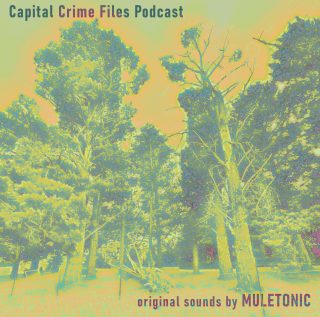
Finally I was going to say something about Australian gymnosperms but it turns out the two local species I thought were gymnosperms – bush cherry and she oak – are not at all! The bush cherry (Exocarpos cupressiformis) has a foliage like a gymnosperm but is related to the sandalwoods. And the she oaks – the Casuarina or ”native pine” – are not pines at all but are slightly related to birches and walnuts! Australia is refuge to some of the odd remnant gymnosperms that carry a whiff of that strange world of dinosaurs that are long gone – I’m talking about the wonderful cycads, and the magnificent Araucariales including the hoop pine who’s trunk looks like an enormous elephant foot. But it is the Callitris which is the native cypress pine which creates scenes around Australia that are slightly reminiscent of Europe or America – the snowy river valley with its gushing waters surrounded by cypress decorated hills could be straight out of California or Nevada. These grey and dusty looking native cypress create a very particular and interesting arid landscape, one that seems even more parched and broken somehow than those which support a smattering of eucalyptus. I also love the timber and we have cypress pine floorboards throughout the house, it’s hard and it splits and it smells good, like turpentine. When it burns it really crackles!
